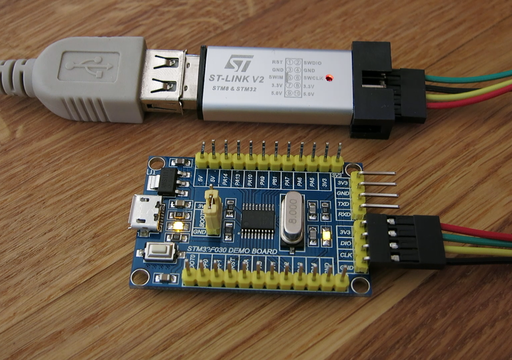

Very simple delay, relying on the idling of the CPU GPIO_Init(GPIOA, &GPIO_InitStruct) //Initialize gpio GPIO_InitStruct.GPIO_Speed = GPIO_Speed_50MHz //Pin speed That being said, we will be using timers and their associated GPIO. However, it is my belief that this leads to confusion for beginners and only opens the door to misunderstandings. GPIO_InitStruct.GPIO_Pin = GPIO_Pin_0| GPIO_Pin_1 | GPIO_Pin_2 //define 0 pin After having reviewed Part 0 of this series, we can now explore controlling GPIO with the hardware timers Other tutorials have used the Systick timer as a good introduction to adding a delay for blinking an LED. GPIO_InitStruct.GPIO_Mode = GPIO_Mode_Out_PP //Set to pull-up push-pull output RCC_APB2PeriphClockCmd(RCC_APB2Periph_GPIOA, ENABLE) //Enable the clock (in order to save power, the clock is off by default) most common type of STM32 DMA peripheral and use it to send some simple audio data.
#Stm32 simple delay how to
GPIO_InitTypeDef GPIO_InitStruct //Define a gpio structure You have seen tutorial around how to program STM32 using Arduino. VAL (current value register) CALIB calibration register

When using SysTick to generate timing, only the first three registers need to be configured, and the last calibration timer does not need to be used.ĬTRL (control and status controller) LOAD (reload value register) It is also often used as a delay in bare metal. The system timer is generally used in the operating system to generate a time base and maintain the heartbeat of the system.
#Stm32 simple delay software
When the value of the reload value register is decremented to 0, the system timer will generate an interrupt, which will cycle back and forth.īecause SysTick is a peripheral of the CM3 core, all CM3 core-based microcontrollers have this system timer, which makes the software easy to transplant in the CM3 microcontroller. If it is 72M, it will be 9M after frequency division, so the system timer is 1/9M once. Note: The system clock is divided by eight, see the picture The time of each count of the counter is 1/system clock. The system timer is a 24-bit down counter. Of course, stm32 has more than one timer, it has a bunch of timers, but I’m mainly talking about its SysTick (system Timer), what people often say is the tick timer, which belongs to a peripheral of the Cortex-M3 core and is embedded in the NVIC (nested interrupt vector). For longer delays than 50-100 us, going to EM2 and wake up on RTC interrupt for example, would be the most energy efficient option. Those who have studied 51 know that 51 has a timer, and stm32 also has a timer. But sometimes you want something simple, like the Arduino guys have: delayMicroseconds (). However, if this is over, it would be boring. The STM32 series of microcontrollers has a powerful set of timers that are capable of all sorts of waveform generation, timebase, and interrupt-driven tasks.


 0 kommentar(er)
0 kommentar(er)
